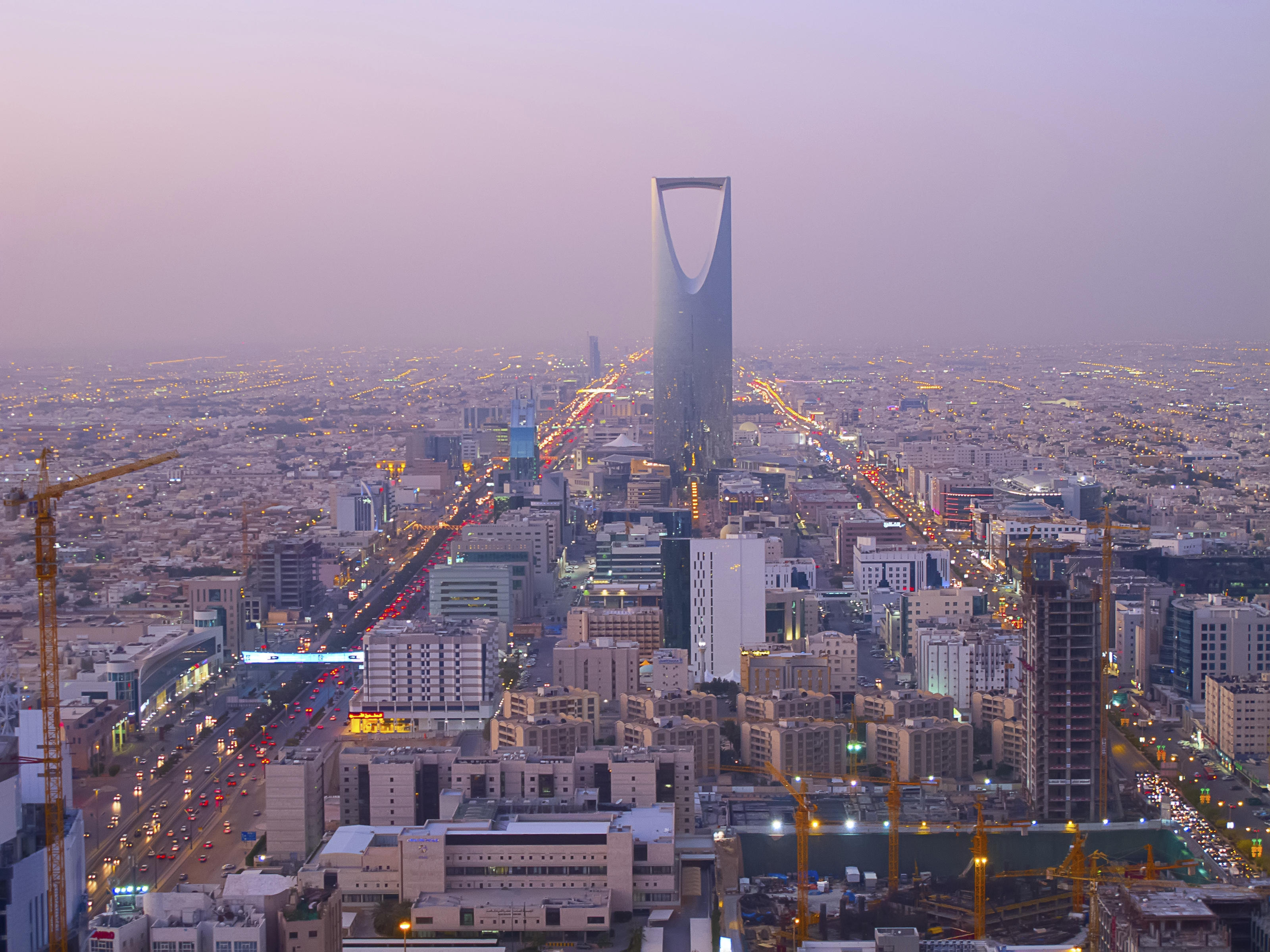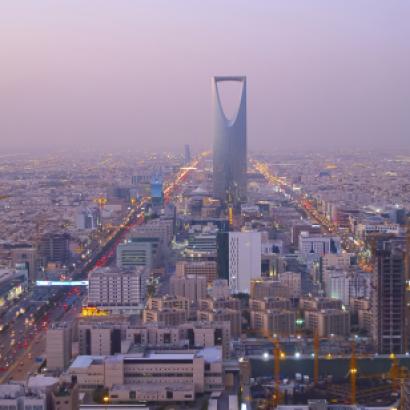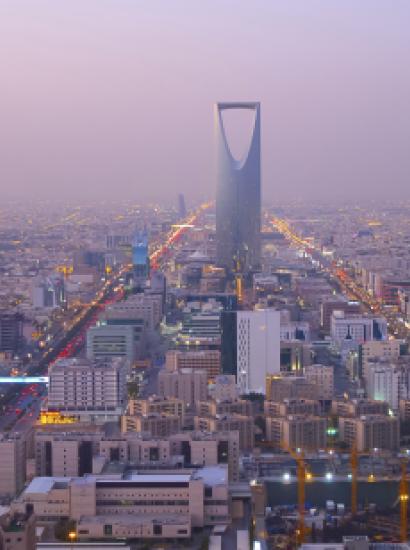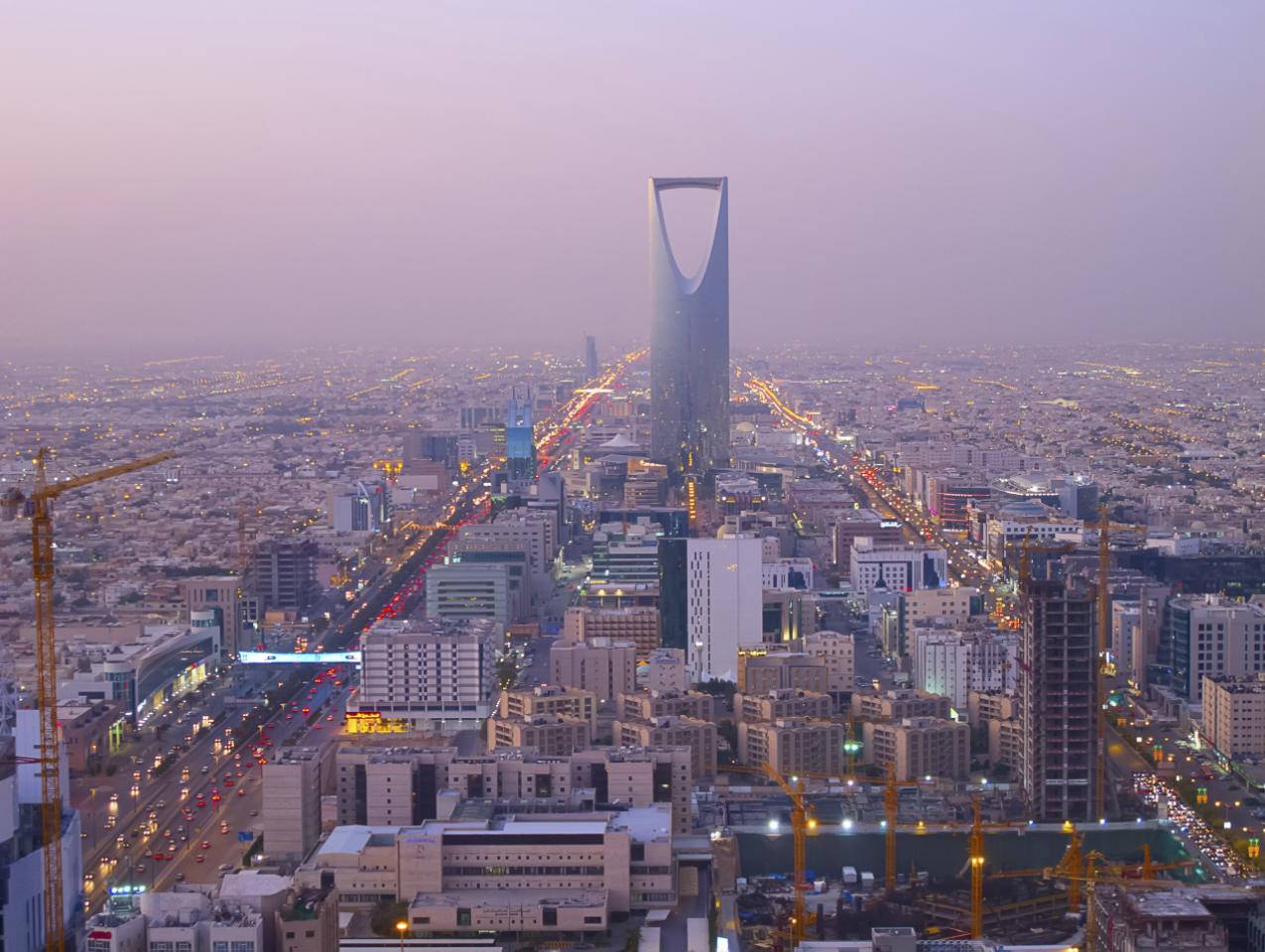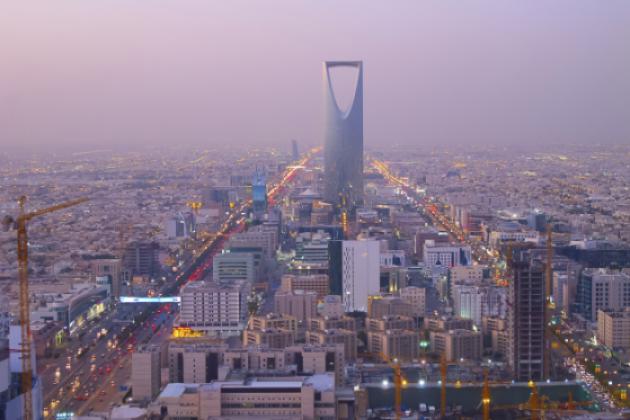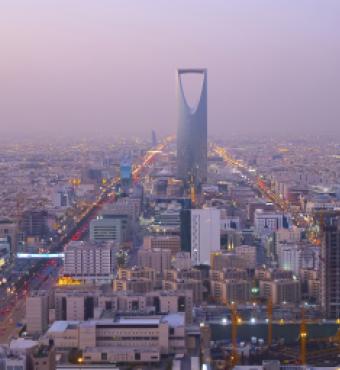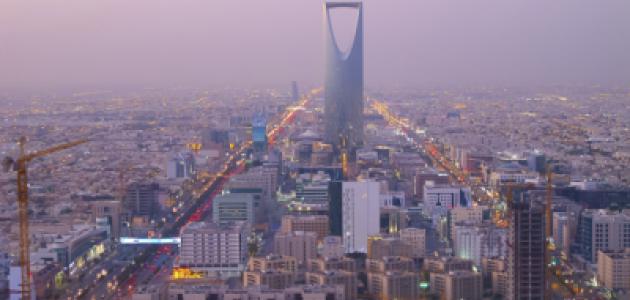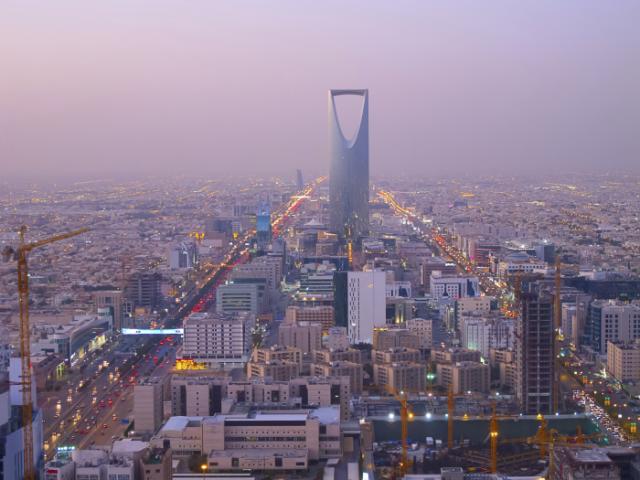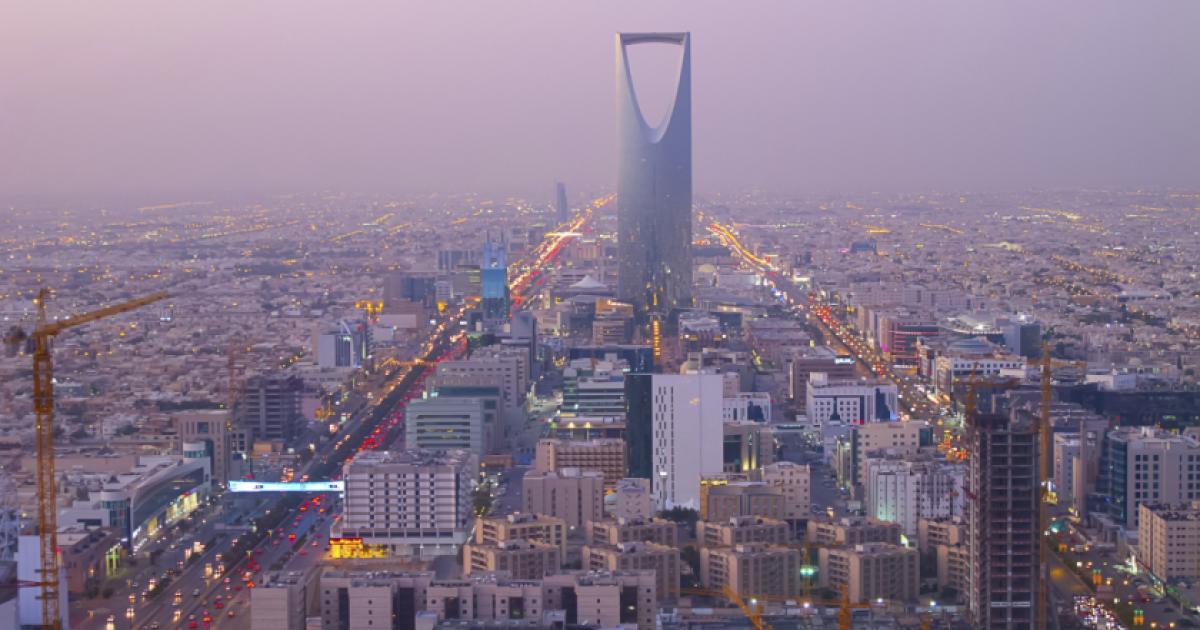There are two lenses by which to view the political potential of Saudi Arabia’s large, tech-savvy youth generation. The first, optimistic perspective holds that given their social awareness, technological skillset, and creative potential, the Kingdom’s millions of young citizens will be the engine for constructive progress. That progress is defined by post-oil economic transformation, and hence renewed political stability and national unity under the House of Saud. This is the image invoked by Saudi Arabia’s grandiose Vision 2030 initiative, as well as its architect, Crown Prince Mohammed bin Salman. In this vision, Saudi youths represent the bulwark to entrenching not just the monarchy, but also the Kingdom’s wider financial, cultural, and geopolitical position in the world.
The second lens is circumspection. A mixture of caution and realism grounded in fact, this approach concedes that Saudi Arabia indeed now has its largest, most literate, and most technologically connected cohort of youths in its history. However, it interrogates those authoritarian promises to generate economic opportunities that currently do not exist, and its concurrent efforts to secure political obeisance in an autocratic manner that defies the contemporary experience of youth activism and popular uprising. This pragmatic view understands that the Saudi economy remains wedded to oil rents; political structures of power remain monopolized by a royal elite allergic to popular participation; and that the promise of technology alone is no antidote to meaningful institutional shifts in political order. It also notes that Saudi youths are not the only sector of society whose aspirations have yet to be met by the stagnant state, and that change could very well come—but from where, and to what end, is unknown.
In either scenario, technology plays a vital role but in radically divergent fashion. In the optimistic pathway endorsed by MBS and the current regime, technology is evoked in public speeches and state rhetoric in a simplistic way. It means a society possessing advanced infrastructure, digital cosmopolitanism, and other trappings of Western-style modernization that make Saudis, and in particular its youth generation, appear as well-adapted consumers. Yet in the more likely second trajectory, technology is not simply measured by how much the Saudi state provides or tolerates in order to secure foreign investment. It manifests as a tool of everyday social life, where it empowers young citizens who are frustrated with the status quo and have little tolerance for empty reform promises.
This does not mean that Saudi youths are agents of revolution or the vanguard of the next Arab Spring. The alarmist undertones of many studies warning of a demographic “bomb” are not necessarily elucidating, not least because young Saudis are products of a bloated rentierist political economy that would be within their interest to preserve. Further, not all political actors who reject the status quo see democracy as the most appropriate option—and especially not in today’s global era, where authoritarian great powers like Russia and China rather than the European Union or United States furnish an alternative role model to state-builders around the world. It does mean, however, that Saudi Arabia has a dynamic combination of youth and technology that can generate political uncertainty and variability.
This, itself, is significant. The blueprint to Saudi Arabia’s future, as outlined by the current MBS-led regime, abhors uncertain and variability. Like all forms of authoritarianism, the personalized model of autocracy consolidating now in Riyadh demands quiet predictability. It calls for a stable, gradual, and unquestioned trajectory of development, in which youths become loyal and predictable consumers of not just technology but also the regime’s political legitimacy. The problem is that this regime desires modernization without modernity. It craves all the trappings of material advancement and social harmony, in particular a façade of liberal progressiveness such as a diminished role of religiosity and greater state-imposed gender equality. Yet it does not wish to pay the political costs associated with modernity, in that long-term stability requires fundamentally revisiting state-society relations to find a new, more sustainable social contract. In the Saudi case, MBS refuses to entertain the idea of surrendering voice, influence, and potentially power to segments of society—such as youth—who refuse to imbibe his paternalistic mandates and imperatives of loyalty. Indeed, there is a declared intention that whatever benefits accrue to Saudi society will be exclusively upon his discretion. For that reason, a future of instability and volatility is as plausible as the prosperous and secure outcome evoked by the Saudi leadership today.
Youth Demography, Political Attitudes, and the Economic Crunch
Like many Arab societies, Saudi Arabia is very young and mostly urban. Most of the population is clustered around the ten largest urban agglomerations, of which the most prominent are Riyadh, Jeddah, Mecca, and Medina. Officially, the Kingdom’s total population in 2018 was roughly 33.5 million, of which approximately half were under the age of 30, almost evenly split between the 0–14 and 15–29 age groups.1 As impressively youthful as these figures, they also undercount. Saudi citizens comprise only about 20.5 million of the total population given the high number of expatriates and foreign workers residing in the Kingdom. When looking only at Saudi nationals, the impression is different: nearly 60 percent of Saudis are under the age of 30, and nearly 40 percent are 18 years or younger.2
In essence, whatever the economic and social implications are currently of Saudi teenagers and millennials pursuing their voice, they will amplify over time as the children of today mature in the coming decade. Eventually, of course, this “youth bulge” will diminish as the Kingdom’s demographic transition plateaus, much like the Arab world, with fertility rates continuing to slowly decline concomitant with stable mortality rates. For the next generation, however, the Kingdom will still need to deal with its unprecedented demographic phenomenon.
What do we know about the attitudes and views of Saudi youth today? Reliable public opinion and survey data focusing only upon the young are not as commonly found here as in other Arab countries, reflecting the Saudi government’s reticence in dealing with external researchers and the political sensitivities of asking questions under authoritarianism. Attitudinal data on Saudis in general, and not focused only upon youth, do not offer major surprises. The Arab Barometer’s Second Wave, for instance, surveyed the Kingdom in 2011 in a rare opening.3 One finding was the endemic nature of patriarchy in politics (76 percent believed men made better leaders than women) but less so in economics (53 percent believed men and women should have equal work opportunities) and social issues, with more than two thirds responding that men and women should have equal divorce rights. Another was a generally positive orientation towards democracy. More than half agreed that democracy was the best political system; nearly two thirds did not believe a regime governed by a “strong authority which makes decisions without considering electoral results or the opinions of the opposition” was appropriate; and more than two thirds believed that political reform should be implemented gradually. At the same time, a vast majority—nearly 91 percent—reported that no existing intellectual or political movement represented their aspirations; this speaks to the absence of independent organizations and party-based pluralism under a political regime defined by its power monopoly by the monarchy.
While these findings do not shatter any assumptions, a handful of polls focusing purely upon Saudi youth furnish more provocative insights and suggest that this generational cohort understands quite well how difficult their economic futures might be—and concurrently how important it will be to have an accountable and capable leadership that takes their interests into account. The 2017 Global Youth Wellbeing Index indicated that young Saudis are generally more liberal than the societal mean regarding many issues.4 For instance, 61 percent believed men and women should have the same rights. Yet there is also disquiet. Just 51 percent believed their standard of living would surpass that enjoyed by their parents—not bad in comparison to many countries, certainly, but surprisingly low given the guarantees of welfarist protection and oil-fueled prosperity that the Saudi political economy was designed to produce in ironclad fashion. Further, 41 percent agreed with the statement that “my government does not care about my wants and needs,” the lowest response in any of the 30 global countries surveyed. On balance, young Saudis have considerable economic anxiety while also exhibiting doubt about the responsiveness and competencies of their state.
Two other more recent youth surveys link these insights to ongoing stress and discontent regarding economy and politics. First, a 2016 study by Depth Consulting, which combined survey methods with content analysis of tweets, found that Saudi youths were far more concerned about their domestic affairs and economic situation than the Kingdom’s foreign policy, including its war in Yemen, regional conflict with Iran, and the Palestinian issue.5 While most evinced hope that Vision 2030 would succeed, they also defended the economic rentier system that Vision 2030 was supposed to reverse: for instance, three times as many youths desired an “expansionary” economic policy and budgetary spending as one defined by austerity. Second, Saudi youths seem extremely hopeful regarding the rise of Crown Prince Mohammed bin Salman. The 2018 Arab Youth Survey by Asda’a Burson-Marstellar found that 91 percent of young Saudis supported King Salman’s 2017 decision to appoint MBS as Crown Prince; 90 percent believed MBS would take Saudi Arabia in the right direction; and 97 percent believed MBS was a “strong” leader.6 It also corroborated that on many social and cultural issues, Saudi youths were relatively progressive. For instance, more than 80 percent supported the decision to allow women to drive, and nearly 90 percent wanted Arab leaders to improve the personal freedoms and human rights of women.
In sum, all is not well with Saudi youths. And while it is easy (and perhaps expected) to make sweeping generalizations on basis of these data points, a more cautious approach suggests something more fundamental: that a booming urban youth demographic can be either a boon or a bomb, but what matters most is how the state adapts to this changing structural context. In this respect, the most pressing aspect is material well-being. While the rest of this paper will squarely deal with the implications of the youth bulge for Saudi politics, particularly the role played by technology under the monarchical state’s new direction headed by MBS, it is instructive to consider something more fundamental first—the structural deprivation that is affecting, and will continue to affect, young Saudis. “Deprivation,” here, is used in a relative sense; Saudi youths are almost universally literate and expect to find appropriate occupations in the economy. For men especially, securing stable work is a virtual prerequisite for marrying, finding new housing, and starting families. Until they do so, they are stuck in what sociologists have called “waithood,” a demoralizing state of personal and financial limbo that as much reflects the lack of opportunities in the economic sphere as it does the skills and ambitions of job-seekers.7
Statistically, it is not difficult to find evidence that many Saudi youths today, and more in the future, will suffer from waithood. While the country’s “official” unemployment rate is less than 6 percent, like demographic numbers this figure is biased because it counts the large population of non-Saudi residents, most of whom reside in the country either working or dependent upon an expatriate worker (e.g., families). Among Saudi citizens, the unemployment rate reached 12.9 percent in fall 2018, with 1.07 million Saudis seeking work—the highest rates recorded since the government began tracking this stratified figure, and a far cry from the target 7 percent projected by 2030.8 Among Saudi youths, the World Bank estimates unemployment at over 25 percent.9 Both figures notably underestimate given the gender divide. The Kingdom only has a 22.3 percent female labor participation rate; four out of every five Saudi women never enter the labor market in the first place.10 If the sanguine images of a modern, liberalized, and productive Saudi economy conjured by Vision 2030 and its technocratic proponents were to materialize, then massive changes—not just economic, but legal, cultural, and social as well—would need to unfold first for these millions of women to find dignified work appropriate to their education and skillset. This is especially urgent given that the majority of Saudi university students are now women.
In sum, Saudi youths are coming of age within an economy where long-term growth is far from assured. The problem of the Kingdom’s unemployment problem, particularly for its youth populace, have been well articulated by economists.11 One noteworthy insight, which helps contextualize Vision 2030’s political gamble, is that the economic legacies of rentierism are incredibly resistant to even strident reforms.12 Theorists of the rentier state have exhaustively delineated the fiscal and economic distortions that result when entire political economies become wedded to “preindustrial welfarism”—that is, when otherwise underdeveloped states are able to utilize their hydrocarbon wellsprings to provide generous citizenship-based cradle-to-grave benefits, from absent taxation to guaranteed government jobs, in return for political loyalty to the state.13
Vision 2030 explicitly began from the premise that systemic dependence upon hydrocarbon rents was no longer sustainable given the permanently diminished price of oil and the unforeseen growth of Saudi job-seekers.14 By any metric, it has its work cut out in terms of job creation. In spring 2018, Saudi planners conceded that by 2022 alone, they would need to create 1.2 million new jobs to reduce the national (citizen) unemployment rate to under nine percent.15 This hints at a deeper issue, namely that Vision 2030’s unrealistic plans to transform the Kingdom into a model of tech-driven, investment-savvy diversification is hardly the first top-down Saudi initiative wilting under the accumulated pressures of the rentierist social contract.
Consider, for instance, the failure of “Saudization,” a stylized term that a decade ago was floated as reference to new mandates and policies encouraging employers to replace foreign workers with Saudi job-seekers. However, in the private sector, Saudization has failed to make much of a dent: about 80 percent of all private-sector jobs are still held by foreigners, whereas two-thirds of Saudi citizens work in the public sector.16 Many Saudization initiatives have failed given the persistently sticky preference of many Saudis for government work (given its perceived prestige and security), while conversely private-sector employers either ignored rules to hire Saudis or else reported difficulty convincing citizens to perform the same labor as foreigners for equivalent pay.17 The sectoral distortions induced by rentierist development were also resistant to change. For instance, the basic configuration of the Saudi economy for decades enabled oil rents to circulate through state contracts and public disbursements into labor-intensive sectors like construction and retail, which in turn were designed to quickly generate low value-added services and production with cheap foreign labor. Currently, 45 percent of all private sector jobs are thus located within construction.18 This is a low-skill occupation that few Saudi youths exiting university education aspire to join, no matter what Saudization incentives were given.
The failure of Saudization to even marginally erode the labor market and institutional legacies of the rentierist political economy is the logical precursor to the most prominent failure of Vision 2030’s economic projects thus far, the partial privatization of Aramco, the state-owned oil and natural gas firm. Promises to float shares of Aramco on international equity markets through one of the largest IPOs in history collapsed in fall 2018. Then, it became clear that Aramco’s valuation would not remotely approach the $2 trillion mark envisaged by officials, thereby depriving the government of projected venues while simultaneously subjecting its crown financial jewel to external pressures.19
There is irony in this. The Aramco IPO was part-and-parcel of a grander statist overhaul designed, at some downstream point, to spearhead the transformation of the political economy. Yet it was concocted behind closed doors and scuttled when the complexity of the undertaking was subjected to openness and transparency—the precise values repeatedly invoked in Vision 2030’s framing document. Accepting short-term uncertainty and risk is what recalibrating an oil-addicted political economy requires, but that is what MBS and his advisers seem to reject the most. How the government will deal with continually depressed energy prices, with attendant pressures to run balanced budgets and raise domestic revenues within a society unaccustomed to both, remains to be seen.
Saudi youths, thus, are facing a problem familiar to many Arab societies: too many young people are seeking too few jobs, which in turn influences social and political ideals that are more progressive than their elders’. Their economic aspirations are unlikely to be met by Vision 2030 or other economic promises that, for all the billion dollars of consultancy fees required to produce, run up against the institutional wall of risk-averse leadership and rentierist legacies.20 This reflects a deeper flaw of the Saudi regime—the belief that there are shortcuts to state-building, and that the monarchy under a new leadership can have the fruits of late modernization but without the political modernity and tradeoffs it requires. Antecedent to the political implications, however, is the variable of youth activism and collective agency, one sparked by the extraordinary degree of technological connectedness of society.
Digital Technology and New Media: What Role?
The preceding analysis lays out the demographic and structural terrain of Saudi Arabia and its youth cohort. Atop this generational foundation is technology, and in particular networking tools such as social media. While the role of new technologies like automation and artificial intelligence are glamorizing hallmarks (at least rhetorically) within the current governmental push for economic upgrading, it is critical to explore the impact of technologies upon the social and political mobilization of youth at the grassroots level.
Social media is a prime example. Social media in the MENA region has garnered much attention from observers of the Arab Spring. Following the 2011–12 uprisings, scholars emphasized how the internet, mobile phones, and social media applications such as Facebook had transformed the informational environment and media ecologies of the Arab world.21 “Liberation technology,” as Larry Diamond has called it, fosters new and creative forms of social and political mobilization by giving citizens unfettered spaces to share news, criticize officials, organize events, rally international attention, and escape state control.22 Digital tools also enable activists to speak to one another across borders, facilitating the diffusion of protest and resistance through processes of emulation and learning—something certainly witnessed during the Arab Spring.23
Of course, authoritarian regimes can also wield their own technology tools of surveillance and repression. The same techniques of escaping state control, such as encryption and learning software, can also be harnessed to infiltrate and hack dissidents, something that many Saudi dissidents and writers (including Jamal Khashoggi) have experienced for years.24 Further, the densest social networks are no substitute for the raw human capital necessary for political engagement. Technological determinism, the notion that informational tools like Twitter alone can topple dictatorships, should be taken with a grain of salt. Instead, tools like social media are best seen as neutral multipliers that can make preexisting efforts at either mobilization from below or control from above potentially more effective, in close conjunction with broader economic, institutional, and geopolitical forces shaping state-society relations.
What makes Saudi Arabia unique in the Arab context is the extraordinary level of internet penetration and social media saturation. The Kingdom is among the most connected countries in the world. In 2017, there were 122 mobile phone subscriptions per 100 people, exactly on par with the EU and the United States.25 Approximately 91 percent of its populace uses the internet, one of the highest figures across the globe, with over 75 percent (or roughly 25 million) users of active social media platforms.26 YouTube, Facebook, Instagram, and Twitter are the most popular social networks; in addition, over 24 million instantly communicate via WhatsApp, over 13 million on Facebook Messenger, and 13 million on Snapchat. The 2018 Arab Youth Survey found, further, that the majority of Saudi youths receive their daily news from social networks like Facebook and Twitter, not online news portals or traditional broadcast media. The Kingdom’s telecommunications networks give ample bandwidth to support such internet usage, with one study claiming that Saudi users enjoy 400 percent more data transfer volume and 200 percent more dedicated audio bandwidth than the global average.27
The rise of internet usage and social media usage in the Kingdom has remarkably differed from past experiences with conventional broadcast technologies. Whereas the former in the 2000s was typified by widespread acceptance and rapid circulation, the latter was immersed in social contention and controversy. The introduction of radio after the 1940s and television in the mid-1960s triggered fierce pushback by conservative voices, ranging from the ‘ulama (Islamic jurists) to members of the royal family.28 In both cases, however, the monarchy and its commercial allies were able to overcome pushback and disseminate these broadcast networks with the argument that such technologies could strengthen national stability. By the 1990s, the result was a carefully manicured national media space, one that combined religious and critical censorship with efforts to encourage political cohesion and foreign policy issues. Alongside with the educational system, which had been heavily inflected by conservative religious elements for decades, these terrestrial technologies in addition to the print media were easily controlled and coordinated by the state.
This began changing in the late 1990s with the rise of Al-Jazeera and other transnational satellite channels, which Arab regimes found difficult to repel.29 Ethnographers researching this new informational landscape by the mid-2000s reported that youth-driven innovations such as e-mail, mobile phones, digital cameras, and new regional television programs such as Star Academy were blurring the boundaries between consumption and production in the Saudi media sphere, exposing how state regulators could no longer keep up with these trends.30 By then, the widespread introduction of internet access and early digital modes of creative expression, such as blogs and online message boards that gave rise to critical political discussions, was unfurling at a dizzying pace that caught the government off guard. The Ministry of Culture, which assumed some initial authority over the regulation of online content, simply could not filter all the diverse and elusive forms of internet discourse apart from the obvious tool of blocking access to websites.31
A fundamental reason why Saudis took to online engagement more rapidly than elsewhere in the Arab world lies in the political conditions constricting public discourse. Unlike liberalized autocratic states like Morocco, Jordan, or Kuwait, Saudi Arabia lacked public institutions that could entertain political discussions between the competing pluralistic interests of social forces, such as an elected parliament, independent civil society organizations, and even a semi-autonomous media. Of course, the same could be said for more closed authoritarian states in the Middle East, like Libya and Syria. The difference, however, was that in those countries, regime-controlled institutions physically prevented internet penetration, and existing telecommunication infrastructures were extremely poor. In Saudi Arabia, by contrast, the state-owned telecommunication firm saw digital technologies as enticing new products and commercial markets—part of the consumerist portfolio to be offered to Saudi citizens within the parameters of the rentierist social contract. Further, unlike radio and television, the internet did not elicit as well the same degree of doctrinal resistance from the religious establishment of ‘ulama.
Thus, since the 2000s, Saudi youths have been able to express themselves through social media and relate to other Saudis and foreigners in ways not possible in offline spaces that fall under the regulatory institutions of the Saudi state, religious institutions, and the hierarchy of political autocracy. Young women are a case in point, as they have avidly used social networks to perform rebellious acts difficult or impossible to do within their normal public and private lives.32 They attack structures of gender inequities, question longstanding policies such as male guardianship, poke fun at the ‘ulama, bring attention to human rights principles, and advance novel conceptions of Saudi feminism to a global audience.
Of course, it is difficult to impute definite political implication to the rapid adoption of digital technologies within the social routines of young Saudis. On one hand, despite the connectedness of Saudi youths to social media, during the Arab Spring the largest protests unfolded in the relatively marginalized Shi‘a communities in the eastern provinces; Facebook did not spark any national youth activist movement that served as the Saudi analogue to the Jasmine Revolution.33 Moreover, as some scholars have noted, the Kingdom’s social media arena is hardly a monolith of liberal ideas. Conservative youths and older Saudis also thrive within online spaces, such as tribal discussion forums and popular platforms like Twitter, where they praise the monarchy and attack Saudi activists that aggressively question the frontiers of social and political reform.34 Likewise, much as the Sahwa Awakening—an Islamist movement targeted by authorities as opposition—commands an impressive online presence, so too do other Islamic figures and juristic voices, including orthodox ones closely aligned to the Saudi monarchy’s conventional strategy of deploying Islam to legitimate its authoritarian power.
On the other hand, the fact that many other young Saudis do exploit online spaces to socially innovate, politically question, religiously rebel, and express their opposition corroborates what many researchers already know—that among young citizens, there is a strong disconnect between their vision for the future versus the model of political authority and economic satisfaction advanced by their parents’ generation. For instance, coinciding with the technological embedding of youth lives online has been the creation of subversive subcultures that combine Western and localized tropes, such as street racing35 and visual art communities that ensconce progressive ideals with new aesthetics.36
Another strong indicator is the preemptive moves taken by the Saudi state itself to immunize itself, and society, from the externalities of online activism. Internet censorship has always characterized the online experience in Saudi Arabia, but in recent years an increasing number of websites have been blocked, including not just the usual array of “anti-Islamic” or “immoral” material but also file-sharing sites, human rights organizations, Shi‘a-oriented forums, and critical publications such as London- based Al-Araby Al-Jadeed. In early 2014, likewise, Saudi Arabia promulgated a new counterterrorism law, which among other moves criminalized an impossibly broad range of social media and internet-based activities deemed harmful to state interests. This sought to put Saudi cyberspace under the physical grip of the security services. The case of Ra’if Badawi, a liberal writer whose online criticism resulted in a 2013 conviction and punishment through repeated lashings and imprisonment, presaged an ongoing campaign against online activists for critical social media posts.
The Saudi regime, particularly the recapitulated one under King Salman and overseen by MBS, continues to nurture a reactive fear of internet activism. In its vision, this manifests as discontent youths learning about human rights online, posting YouTube videos attacking the Saudi monarchy, using Facebook to organize demonstrations, tweeting jokes about Islam or the Kingdom, and engaging in other microscopic acts of sedition. Yet such scenarios, according to those who portray the Saudi leadership as liberal, enlightened, and modernizing, are phantasms: under MBS, the Saudi regime’s drive towards social and economic transformation welcomes youth participation in a radical break from the past. As the final section illustrates, however, the type of modernization favored by the current leadership is a thin one that prizes stability and prosperity while ignoring potential political costs, including the toleration of meaningful pluralism.
Political Implications: Modernization without Modernity?
As rife as optimistic projections of Vision 2030 and Saudi political renewal under MBS are, it is also easy to find alarmist commentaries warning that the entire economic structure and political autocracy of the Kingdom is veering towards revolutionary breakdown.37 In drawing out the potential effects of the current demographic and technological scenario, it is vital to eschew both extreme tropes and instead explore in a matter-of-factly way how the strategies and constraints of the existing political order might play out. It could well be that a future Saudi Arabia, led by MBS, is neither revolutionary nor prosperous. The only certainty is that the current regime has claimed to make transformative decisions regarding society in ways that either ignore or distort the underlying structural conditions. This injects considerable variability and uncertainty into a political system that had long cherished the predictability of its own perpetuation.
Political context is necessary to appreciate the long-term ramifications of the current regime’s strategies. MBS’ rise to power since 2015, characterized by early promotion into core positions such as the Minister of Defense and Head of the Royal Court, culminated in his installment as Crown Prince in summer 2017—and the thus presumptive future king after King Salman, his father. The economic aspects of MBS’ modernization vision contrast with the political dimensions of his ascent. Both are radical, but in different ways, as each responded to the perceived unsustainability of past developments.
In the economic realm, promises of a grand technocratic overhaul in a move away from the rentier state model expressed the correct understanding that the old formula of state-dependent development underwritten by oil and gas revenues had exhausted its logic. Breakthroughs in renewable energy, new production of non-Arabian oil suppliers (such as the United States), plateauing demand in Asia, and liquid futures exchange markets have greatly depressed hydrocarbon prices and thus export revenues.38 That endangered the old provision of unlimited welfarist policies across society, and equally important the distribution of the same oil rents throughout the state apparatus to serve as patronage lubricating various ministries, institutions, and royal cliques. In this sense, it was sensible to begin reconceptualizing the Saudi state not as a purely “allocative” one, serving merely to redistribute oil rents for various clients, patrons, and dependents.39 Even as it moved away from pure rentierism, however, this new Saudi state would still hold a monopoly over commercial power, for it equated competing centers of economic wealth, such as business moguls, with potential political dissidents that would need to be co-opted or repressed. Thus, the Saudi state of Vision 2030 is not a slim regulatory actor that does the bare minimum in cultivating a productive, private sector-oriented economy; it is still a large one that commands unparalleled financial capital but at least would begin planning for non-rentierist development.
The political side of the equation was equally or perhaps even more aggressive. Within the normally shrouded realm of royal politics, MBS quickly moved to sideline potential political competitors, as manifest in fall 2017 in a sweeping purge that ensnared hundreds of elites, including not just business figures but senior princes (some of them his cousins) representing leading figures in other branches of the Saudi dynasty. The imprisonment, torture, and coercion of these commercial and royal figures was a feudalistic shakedown that also achieved a corollary goal of suppressing competing royal figures and thus consolidating MBS’ power base. This drive towards personalistic autocracy is a dramatic departure from the normal operating logic of the Saudi monarchical system, which functioned in the past more like an enormous prize divided amongst senior princes who were each ensconced in their own bureaucratic domain such as certain ministries, security services, and provincial governments.
Yet much as Vision 2030 responded to the realization that rentierism could not be sustained forever, this personalization of Saudi authoritarianism reacted against the reality that succession represented a looming threat to political stability. King Salman was likely the last of his generation, the sons of King Abdulaziz, who passed in 1953, to enter the throne. At some biological point, it would be necessary to transit into a succession structure in which royal power would be transmitted not horizontally, between the Saudi founder’s sons, but vertically, to his grandchildren. When MBS displaced another member of his generation, Muhammad bin Nayef, from the position of Crown Prince in June 2017, it signified that he alone would serve as the mechanism of transferring power to a new royal generation. MBS’ rise also marked a new, more aggressive foreign policy that sought to project this new leadership’s counter-revolutionary push against the insurrectionist spirit of the Arab Spring across the region. In this context, though, initial interventionism amounted to extended adventurism. Among the core failures of Saudi foreign policy since MBS’ rise have been the conflict with Qatar that essentially destroyed the Gulf Cooperation Council, the debacle in Lebanon and meddling in its domestic politics, and the ongoing humanitarian disaster in Yemen.
Thus, the succinct regime trajectory represented by the new Saudi leadership is not accidental. It responds to prior decades of unsustainable rentierist development and the imminent end to the monarchy’s tradition of horizontal succession. MBS’ particular strategy of governance attempts to kill both these birds with one stone, simultaneously discarding the economic burdens of oil-fueled rentierism while neutralizing his political challengers under a new mode of succession. However, whether this choice will be successful in the long run is another question altogether.
In addition, it is necessary to explain as well the disconnect between increasing autocratic rule on the one hand and the advancement of tech-oriented economic development on the other. First, the Saudi regime’s current understanding of technology and advancement is different than the conception used by many observers and youths themselves. The Saudi government, for instance, has pledged a future defined by artificial intelligence and advanced automation. It has begun construction of a $500 billion futuristic city in the desert, Neom, to be filled with robots and beaches, while also pouring money through its sovereign wealth fund into advanced global tech-driven firms, such as Tesla, Lucid, and Softbank.40 This tendency to embrace mega-projects and capital-intensive, government-provided technology is not exceptional. Morocco, Egypt, and Jordan rank among other Arab states that have embarked upon massive new infrastructural projects, from skyscrapers and business parks to (in the latter two) proposals for entirely new capital cities. Echoes of “high modernism,” the ideological proclivity to redesign social and economic institutions in accordance with understood new scientific laws, run throughout such authoritarian efforts to physically remake the urban face of their societies.41
What makes the Saudi effort unique, though, are four attributes. The first is the sheer amount of capital being exerted to achieve this vision, which reflects the Kingdom’s considerable financial reserves. There is virtually no other country in the world that can budget a half-trillion dollars to build a new robotic city. The second is that such state-imposed representations of technological life are severely disconnected from youth experiences within a context of social media saturation and technological embedding. Facebook and Tesla are located in virtual walking distance with one another in Silicon Valley, but whereas the former has become a mechanism for everyday express and resistance by social activists, the latter has become an avenue through which the Saudi state can intercede within the realm of technology and claim ownership to progress. Put another way, digital technology from the perspective of many Saudi youths means instantaneity, creativity, networks, and access to the online realm; from the perspective of the Saudi state, it means massive, top-down injections of new innovations imported from other countries.
Third, there is irony in that foreign technologies, such as electric cars and artificial intelligence, often stem from the figurative notion that openness and competition can breed knowledge-driven innovation. By contrast, there is neither openness nor competition with the types of capital-intensive technologies promised by the Saudi state. Saudi citizens have little choice about whether their government should build Neom—or, for that matter, how many robots and self-driving cars should reside in it. The same contradiction can be found in the early 2019 controversy involving Netflix, which was pressured by the government to withdraw an episode of a comedy series that lampooned MBS.42 The controversy embodied the modality of the Saudi regime’s fetish with Western technology: such advancements are to be secured and introduced at all costs, but only on its terms and accord.
Fourth, the Saudi regime and not Saudi citizens must be the producer of new ideas. MBS has publicly backed the relaxation of previously restrictive social and cultural rules. For instance, under his direction, Saudi authorities have upended the ban on women’s driving, reduced the religious authority of the ‘ulama, opened the first public movie theaters, held massive musical concerts, and promised to open the Kingdom to international tourism. Of course, as human rights monitors have noted, such social reformism has not impeded ongoing repression of political opposition. The example of Jamal Khashoggi’s brutal murder exemplifies this. What is notable, however, is that in some issue areas, the Saudi regime has sought to “copyright” progressivism as its own achievement by arresting prominent activists that had previously pushed for the very same reform openings. Its crackdown on well-known women activists that had long clamored for the right to drive, which include graphic accounts of torture and abuse while jailed, is a case in point.43
The totality of these dimensions underscores the more pressing political problem of the Saudi regime. As the political science literature on neopatrimonalism and sultanistic regimes indicate, extreme personalization is a questionable strategy of authoritarianism, because it institutionally divorces the heights of executive power from popular coalitions of supporters that can help absorb opposition and deflect crises.44 This is why the Saudi model will struggle to achieve its goal of modernization without modernity. Modernization is more than Google apps, robot citizens, and music concerts. It also means the fundamental restructuring of state-society relations in favor of a more sustainable social contract that can be institutionalized within stable arrangements defined by responsive state institutions, reciprocal political arrangements, and greater pluralism that allows diverse interests to be incorporated or engaged.
This also underscores how every national trajectory must abide by its own specificity. Looking to the Chinese model, for instance, does not generate adequate guidance for Saudi Arabia, even though Saudi officials have often invoked the “Chinese model” as a paradigm of development—not only because of the economic gains to be had from greater trade and investments with China, but because the country seems to combine economic capitalist progress with closed, political autocracy.45
However, the so-called Chinese model is typified by a particular institutional configuration produced by its historical development. It is party-state dominated by a hegemonic institution, the Communist Party, whose ideology originates in social revolution and whose structure is designed to foster mass mobilization that connects ruling elites to social constituencies, bureaucratic actors, and popular organs. It is by no means immune to change, but as political scientists know well, party-based autocracies differ greatly from personalized authoritarian regimes (and, historically and statistically, last much longer) given the effective ways that party institutions can knit together ruling coalitions, resolve internal conflicts, and manage popular opposition.
The Saudi model under MBS does the reverse of what party-based autocracies do. It eschews the construction of new political institutions, much less pluralism, in favor of a highly personalized vision of leadership that offers modernization but without the political reciprocity and popular engagement required of such transformative projects. Chinese political order today succeeds not only through its repressive apparatus, but also because the Communist Party has been able to penetrate key educational, commercial, and public spaces, thus deterring or foreclosing the creation of competing political movements. MBS’ regime, it seems, has no such project in mind. It equates fealty to the Saudi state with fealty to his own personhood and desires not institutions that can diffuse and disperse royal power across society but rather imposing stricter vertical bonds of absolute loyalty.
Conclusion
The mismatch between, on the one hand, these economic strategies and political objectives from the level of the Saudi regime, and on the other, the diffuse, complex, and multidimensional potentialities of the youth generation and changing technological attributes, could well result in change or instability. As explained here, this does not necessarily mean either democratization or revolution. But it does mean a degree of uncertainty antithetical to the kind of linear, modernized upgrading promised by MBS.
One palliating possibility is to allow for controlled pluralism, in the vein of liberalized monarchical autocracies like Morocco and Jordan. Hypothetically, such pluralism would allow for some spaces of public contestation and political debate, as in elected legislatures or civil society organizations; this would give expression to competing ideas yet still also preserve the underpinnings of royal power. Such a strategy would also bolster the monarchy’s legitimacy insofar that it would be seen as the innovator of such daring political reforms. There are two problems with this scenario in Saudi Arabia, though. First, by virtue of his strategies of autocratic personalization, MBS has already alienated numerous key actors within the state itself, including business elites, bureaucratic figures, and branches of his own family. Any autocratic “decompression,” thus, might provide the opportunity for his adversaries to retaliate. Second, the Saudi regime must find a way to step back from its foreign adventurism that has cost the Kingdom considerably in terms of prestige, standing, and finances while providing few tangible results. It remains to be seen whether these challenges can be overcome.
Hicham Alaoui is an associate at Harvard University’s Weatherhead Center for International Affairs and a DPhil candidate at St. Anthony’s College, Oxford. He has been affiliated with the Center for Democracy, Development, and the Rule of Law at Stanford University, as well as with Yale University and University of California, Santa Barbara, and helped create the Institute for the Transregional Study of the Contemporary Middle East, North Africa, and Central Asia at Princeton University.







